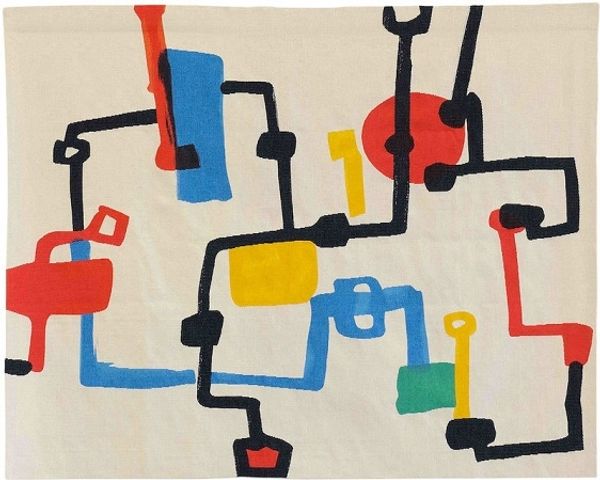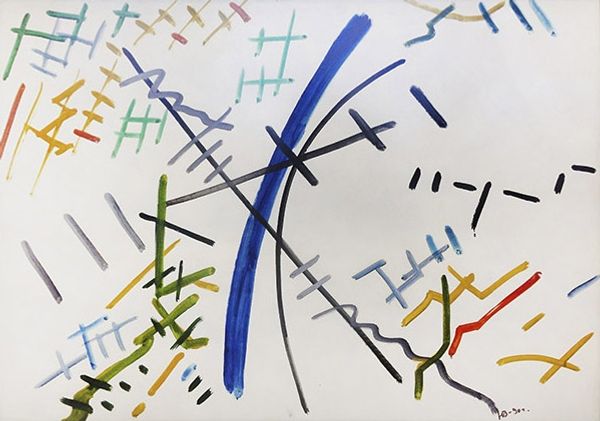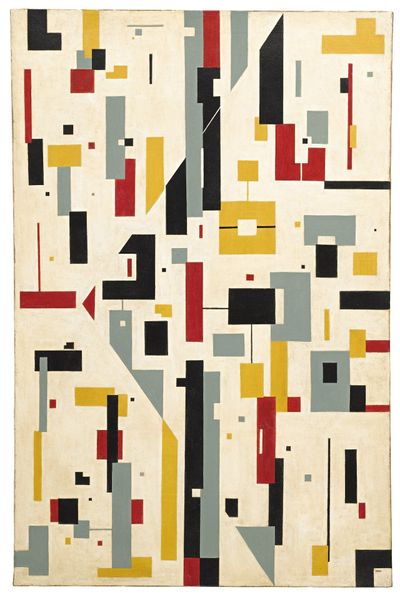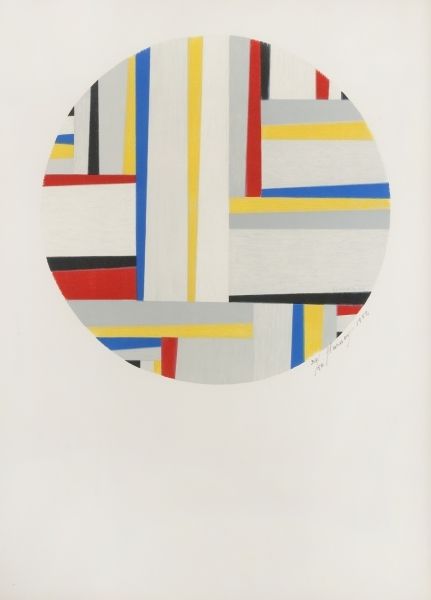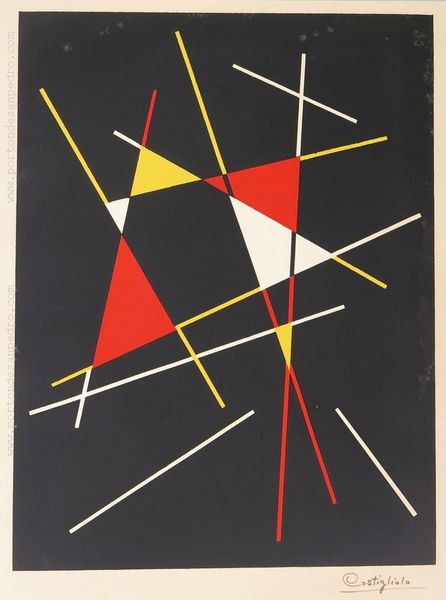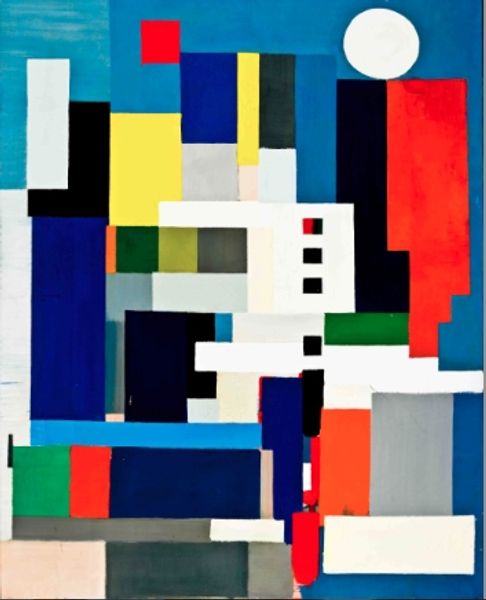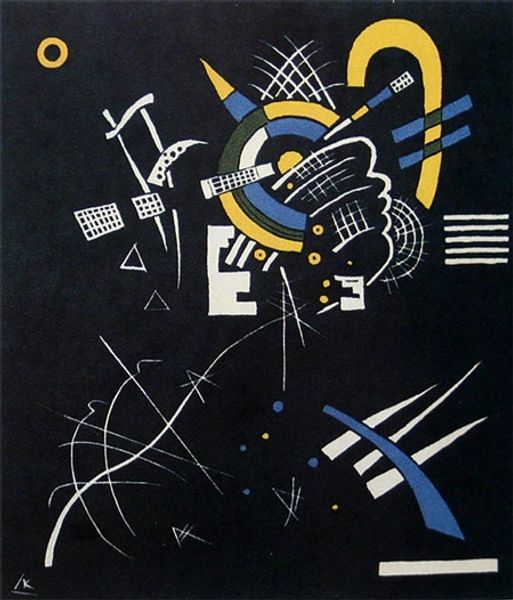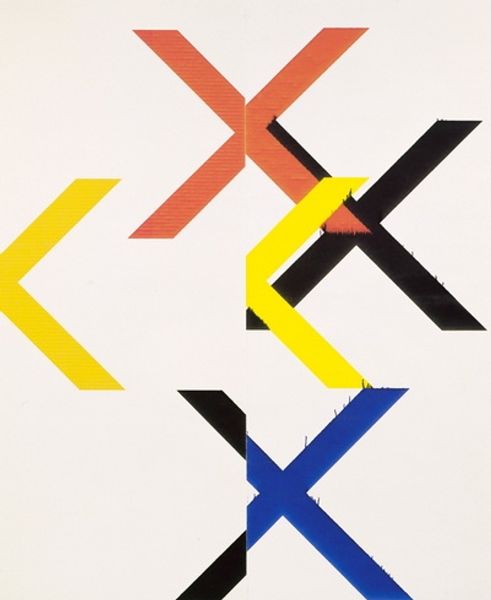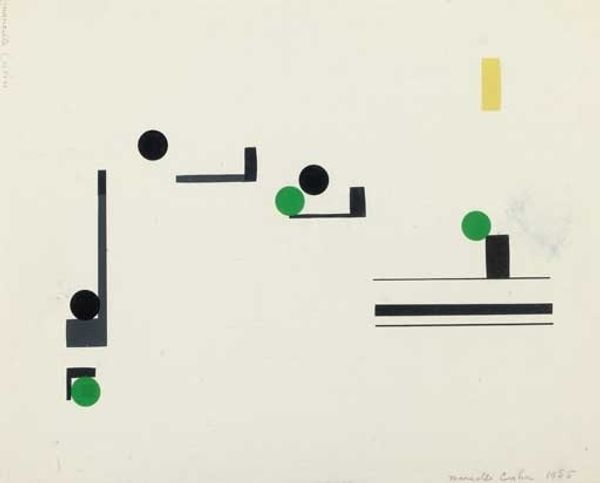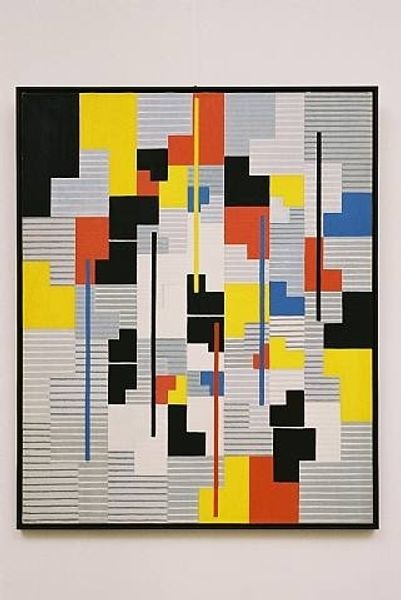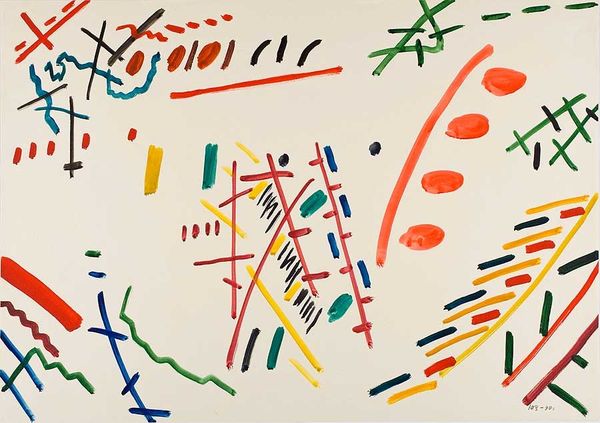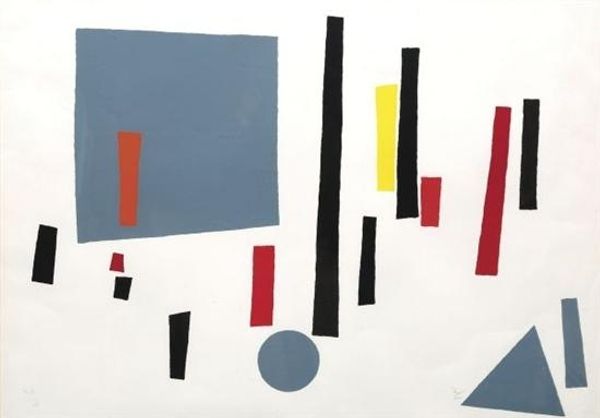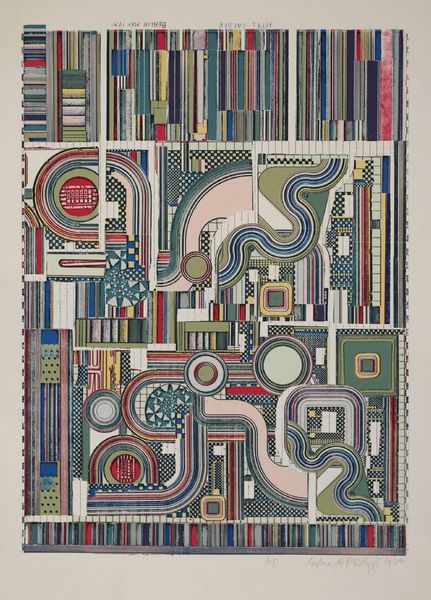
acrylic-paint
#
op art
#
pop art
#
constructivism
#
acrylic-paint
#
form
#
geometric
#
differing style
#
abstraction
#
line
Copyright: Henryk Berlewi,Fair Use
Curator: Right, let’s turn our attention to Henryk Berlewi's "Composition" from 1934. It's executed with acrylic paint. My immediate reaction is... playful. Like building blocks scattered on a dark surface. Editor: The composition, for me, immediately evokes questions about the cultural milieu in which it was conceived. The use of bold geometry during this period suggests an investment in social progress and a machine-age aesthetic, possibly echoing constructivist ideals of integrating art with industrial production. What do you think? Curator: It is definitely tied to constructivism; he was deeply invested in its principles! It embodies a clear investigation into basic geometric forms, color relationships, and spatial arrangement. His move toward abstraction—the reduction of form to its essence—feels tied to broader experiments around the role of art in a mechanized society. How could new industrial processes reshape not only our physical environments but also our perception? Editor: And were these aesthetic choices also related to accessibility for different audiences, or political messaging through abstraction? The choice of acrylics must also have enabled a certain kind of process for rapid output during a very turbulent period in European history... The socio-political backdrop is really important. Curator: Absolutely! The availability of acrylics as a new material certainly factored in, as it afforded both durability and flexibility for Berlewi. Moreover, acrylic’s relative ease of application aligned with principles of industrial efficiency and standardization, in my view. There is also this very considered organization that emphasizes rational principles! Editor: Which, if we contextualize within the historical framework of rising authoritarian regimes, could itself be read as a subtle form of resistance. Promoting clarity of form and equality through these design languages. The intersection of material culture, artistic expression, and socio-political climate gives this work resonance far beyond just form and color, don't you agree? Curator: That's very insightful. Ultimately, these seemingly simple shapes unlock multilayered considerations about artistic labor, material possibility, and even political messaging. It's fascinating. Editor: Definitely food for thought on the role of art and design as visual codes in tumultuous times.
Comments
No comments
Be the first to comment and join the conversation on the ultimate creative platform.
